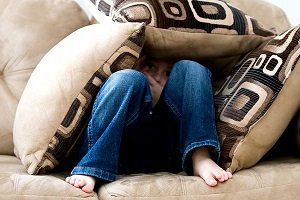How to Get Rid of Bipolar Affective Disorder
TweetThe type of Bipolar illness is determined by the combination of mania or Hypomania and either mild or severe depression. It is also determined by how fast the cycling is. That is, how often do they have an episode in a year? The following are the list of various types of Bipolar Affective Disorder
- Bipolar I Disorder
Children with this disorder have episodes of mania and episodes of depression. Sometimes there are fairly longer periods of normality between the episodes. Usually people spend much more time depressed than Manic. However, some children will have Chronic Mania and rarely get depressed.
In this form of the disorder, the adolescent experiences episodes of hypomania between recurrent periods of depression. Hypomania is a markedly elevated or irritable mood accompanied by increased physical and mental energy. Hypomania can be a time of great creativity.
-
Bipolar Affective Disorder - Cyclothymia
This variant is characterized by many episodes of Hypomania and occasional episodes of mild depression only. A child may have quite a few episodes of Hypomania over the span of a year.
-
Mixed states of Bipolar Affective Disorder
In these conditions, a child will show signs of depression and mania at the same time. Most often, the mood is depressed and there are thoughts of suicide and hopelessness. The rest of the picture is however mania. Depressive and manic symptoms sometimes occur at the same time. Patients who are overactive and over-talkative may be having profoundly depressive thoughts. In other patients, mania and depression follow each other in a sequence of rapid changes; eg, a manic patient may become intensely depressed for a few hours and then return quickly to his manic state.
This means there are many cycles of mania and depression each year. These recurrent episodes may be depressive, manic, or mixed. The main features are that recurrence is frequent and that episodes are separated by a period of remission or a switch to an episode of opposite polarity.
-
Childhood Onset Bipolar Affective Disorder
Children with this picture have episodes of mania and depression just like adult bipolar disorder but they are two differences.
The cycling is fast. Often a person will cycle between mania (or hypomania) and depression many times a day
The episodes are short. Rarely will they have days of any one state.
Often mania and depression are mixed up together at the same time.
The less severe form of high in bipolar disorder is hypomania.
Bipolar Affective Disorder - Bipolar Disorder is the form of depressive illness in which the sufferer has periods of being on a high, as well as periods of depression.
Treatment of Bipolar affective Disorder - Effective treatment is available for bipolar disorder.
What is the cause of Bipolar Affective Disorder? Learn about various causes of bipolar disorder such as family tree, your genes, loss of job, etc.
Bipolar Affective Disorder Fact
What are the symptoms of Bipolar Affective Disorder? There are various symptoms of bipolar disorder.
Can Adolescent have bipolar affective disorder? Bipolar disorder can occur in adolescents and has been investigated by federally funded teams in children as young as age 6.
Can Children Have Bipolar Affective Disorder? Children experience faster mood swings than adults, often cycling many times within a day.
Bipolar Affective disorder - a case study Millions of Americans diagnosed with mental illness lead healthy lives because of information discovered through clinical studies.
History of bipolar affective disorder - Bipolar disorder has left its mark on history.
Importance of Bipolar affective disorder diagnosis Diagnosis is important, because it guides treatment decisions.
What is the need of bipolar affective disorder diagnosis in childhood? The importance of proper diagnosis cannot be overstated.
What are the types of bipolar affective disorder? Learn about various types of bipolar disorder.
How can u help ur child and what is the role of parents? Your child can reduce the minor mood swings and stresses that sometimes lead to more severe episodes by adhering to the following tips.


Sometimes crying or laughing
are the only options left,
and laughing feels better right now.

Current Issue
 Self Help Leaflets Take the help of our self help leaflets or booklets. |
 The DG Magazine All about living with depression |


















